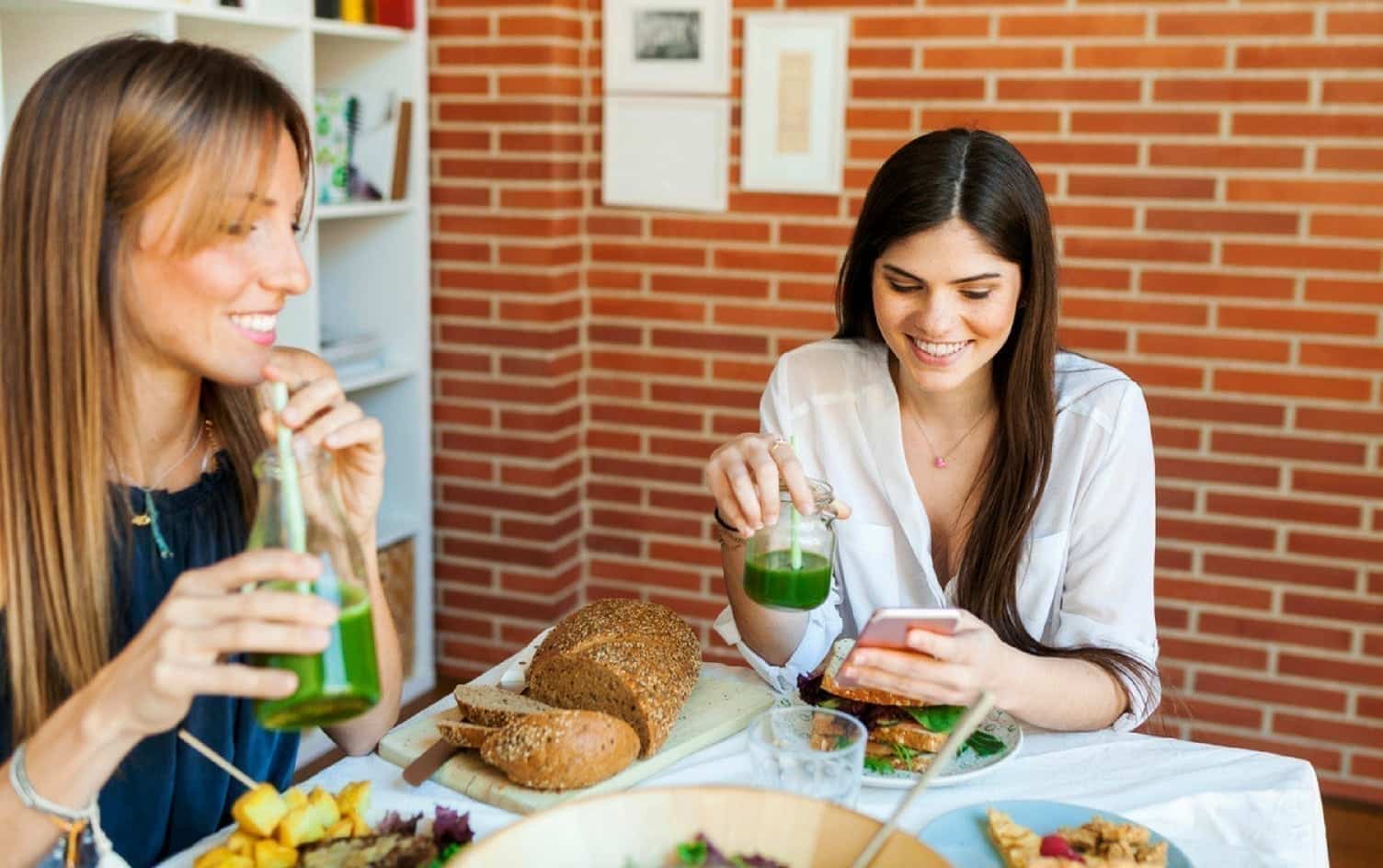Healthy eating is often highlighted for its ability to change your energy levels, improve athletic performance, contribute to weight loss and lower chronic disease risk. But here’s one more reason to opt for nutrient-dense options: What’s on your fork could have a big effect on your mood.
There’s a reason “hangry” is now in the dictionary — the concept of food and mood being linked is getting increased attention. With more understanding about hormone regulation, blood sugar and the brain-gut connection, it’s likely to keep getting attention. Let’s take a look at how eating in different ways can give you a fresh perspective on your emotional health.
THE BLOOD SUGAR CONNECTION
The major way your food choices turn into happiness, irritability or a whole range of emotional responses, is because of your blood sugar, also called blood glucose.
When you eat, your body breaks down the food and converts some of it into glucose — this is essentially fuel that moves through your bloodstream, and it’s the primary energy source for your body and brain, says Michelle Routhenstein, RD, owner of nutritional counseling practice Entirely Nourished.
Two hormones, insulin and glucagon, regulate the level of blood glucose that’s circulating and determine what should be used and what can be stored. When your blood sugar levels get very low — something that can happen with eating simple carbs that cause blood sugar levels to spike and then crash — it can cause you to become tired, irritable, nervous or anxious, says Routhenstein.
If those simple carbs have added sugar, the effect can be even more profound. That’s why eating a big hunk of cake without any other food — such as protein or fiber — to slow down the glucose spikes can leave you feeling hangry not long afterward.
SEROTONIN, INFLAMMATION AND BAD MOODS
In addition to the blood sugar impact, certain foods affect how you release serotonin, the “feel-good hormone,” in your brain. This can cause a surge in feeling content, apart from the happiness that might come from feeling full.
Research suggests that low intake of omega-3 fatty acids is linked to depressed mood, hostility and impulsive behavior, according to Routhenstein. Researchers hypothesize that those reactions may be prompted by less release of serotonin, since high consumption of omega-3’s is associated with decreased depression and elevated mood.
Inflammation plays a major role here as well, Routhenstein adds. Omega-3 foods like salmon, walnuts, chia seeds and flaxseed not only boost serotonin levels, but also reduce systemic inflammation.
“Chronic inflammation causes elevations in C-reactive protein, which is associated with increased risk of depression,” she says.
FROM THE GUT TO THE BRAIN
Finally, the bacteria in your belly is one more factor in the mix. There has been a significant amount of research in the past few years about the role of your gastrointestinal system in regulating emotion like anger, anxiety, sadness and even joy.
Harvard Medical School has noted that the brain has a direct effect on the stomach — for example, when you’re feeling scared, you might also become nauseous — but that the connection goes both ways. Your gut can send signals to the brain that trigger certain emotional responses.
This is especially true in the case of stress, researchers note. When you’re eating a poor diet, this can trigger inflammation in the digestive system, and that results in signals from gut to brain that increase cortisol — the hormone responsible for the “fight or flight” stress response.
In other words, when your gut isn’t happy, most likely you won’t be either. Harvard researchers note that when your gut bacteria is out of balance, it may lead to nervousness, trouble relaxing, quick temper and even procrastination and an increased risk of bad habits like smoking, drinking too much and overeating.
THE RIGHT FOODS TO EAT
So, you’re ready to boost your emotional health as well as your physical well-being. What do you put on your plate?
Focus on gut-happy favorites and you’re likely to get your blood sugar and inflammation on track as well. Eat more vegetables, fruits and other fiber-rich foods in order to encourage more microbial diversity. A low amount of diversity has been linked to insulin resistance, obesity and heart disease.
Also consider adding prebiotic foods. Probiotics get a great deal of attention, but prebiotic options are equally important. These are foods your beneficial gut bacteria use to thrive, and they include onions, garlic, whole wheat, bananas and beans.
Add in some fermented foods. Your gut loves fermented options like kimchi, sauerkraut, beet kvass, kombucha and pickles. Just make sure you choose products that are still active and not pasteurized or canned — heat kills the beneficial cultures you need for digestive health.
For a bigger serotonin boost, Routhenstein recommends folate-rich foods, which can cause the hormone to release into the brain more efficiently. These include dark, leafy green vegetables like spinach and collard greens, as well as asparagus, broccoli, chickpeas and lentils.
Also, take the time to notice how foods are affecting you emotionally. Being more mindful about the food-mood connection can go a long way toward helping you tweak your habits so you’re steering your emotions in the right direction.
Originally published July 2018, updated May 2022
Ready to take the next step? Unlock MyFitnessPal Premium to access custom goal settings, quick-log recipes, and guided plans from a registered dietitian. Premium users are 65% more likely to reach their weight loss goals!




